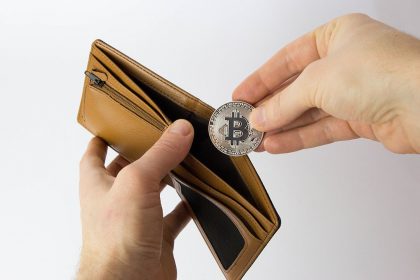Has the thought of accidentally losing your Bitcoin ever cross your mind? As scary as it may be, it happens quite often.
According to research from Chainalysis, an approximate 2.78 to 3.79 million Bitcoins have become inaccessible and are forever lost. This means that about 1 out of every 5 existing Bitcoins are as good as gone.
Therefore, after you buy Bitcoin and store it, it is important to know how to restore your Bitcoin wallet.
How to Avoid Losing Bitcoin
In order to make sure your Bitcoins are safe in your wallet, there are a few important practices to remember:
- Encrypt your Bitcoin wallet with a password.
- Make sure you backup your wallet.
- Creating wallet backups is essential in case of hardware/software failure or if you own a wallet with stolen/lost Bitcoin.
- Store these backups on several locations (such as CDs, Paper wallets, USBs etc).
- Every time you back up data, such as a wallet.dat file, backup your wallet as well.
Backing up your wallet is easy and you can do it using one of the following:
You will have to choose the backup method based on the wallet you are using. Most of the current Bitcoin wallets use the third method – BIP39 mnemonic seed phrase.
Restore Your Bitcoin Wallet Using a Mnemonic Seed
Most Bitcoin wallets are able to backup and restore access to your funds by using a mnemonic seed, a sequence of 12, 18 or 24 words.
Hardware wallets (like a Ledger or a Trezor), which are amongst the most popular options to store Bitcoin, will generate a random mnemonic seed phrase as a recovery option to backup your wallet when you first set them up.
These phrases are formed by a certain amount of words that are randomly generated. It’s important to write these words down, usually on more than one pieces of paper, and never store them in devices connected to the internet.
For that reason, many people choose to laminate the paper or even store the word sequence on metallic substitutes, to ensure it will remain readable for years to come.
Example Of How to Restore Bitcoin Wallet With the Mnemonic Seed
Once the phrase is written down, it is your only backup to restore stolen, lost or destroyed hardware wallets. Simply click on Recover wallet (for Trezor devices) and type your mnemonic seed phrase.
The sequence of words created by Ledger or Trezor devices are BIP39, which means that they can be used with any BIP39 compatible wallet to regain access to your Bitcoin.
Online wallets and desktop wallets are the same. Most, if not all wallets, will provide you with a 12-word seed phrase which is needed in case you lose access to your wallet. Therefore, if you ever lose access to your funds, you can restore them by importing the phrase.
Restore Bitcoin Using a wallet.dat File
Often, desktop wallets will also make use of a file called wallet.dat to store your private keys and other important information.
Depending on your operating system, you will be able to access this file at one of the following locations.
- If you use Windows: %APPDATA%\NameOfWallet/
- If you use Linux: ~/.NameOfWallet/
- If you use Mac OS X: ~/Library/Application Support/NameOfWallet/
Once the file is located, the backup process is easy. Just copy the file to another device, such as an external hard drive or another computer.
To restore the wallet simply copy/paste the backup over a pre-existing wallet.dat file in the wallet’s installation folder. Keep in mind that this method will wipe all data on the wallet.dat file that you are overwriting. So, be careful not to overwrite an existing wallet.
Wrapping Up
Having a plan B is important in every situation, especially when it comes to your hard-earned Bitcoins.
Contrary to most financial institutions, there is no insurance over your digital coins, so you will have to take steps to ensure their safety.
And since you are solely responsible for your coins, the only way to maintain peace of mind is through a backup plan. Don’t worry, the process is as simple as writing down a few words, or copy/pasting a file. In fact, that’s all you need to do.
So, what are you waiting for? Go back up your Bitcoin wallet. With these security measures in place – any future problems with your Bitcoin wallet can be avoided.
Disclaimer: Coinspeaker is committed to providing unbiased and transparent reporting. This article aims to deliver accurate and timely information but should not be taken as financial or investment advice. Since market conditions can change rapidly, we encourage you to verify information on your own and consult with a professional before making any decisions based on this content.

Dimitris Tsapis is writing content for Paybis, one of Europe’s top cryptocurrency exchanges, where you can buy bitcoin and other digital currencies fast and easy.





